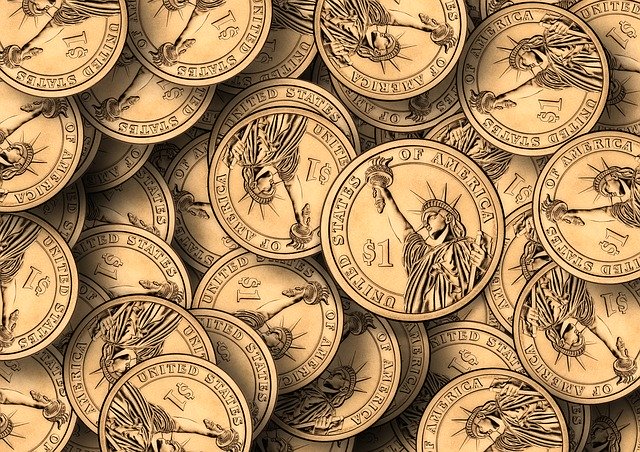For millennia, attempts to deceive each other have been a part of human interaction. The earliest recorded instance of fraud dates back to 300 B.C.
Fraud is considered an act of wrongful or criminal deception intended to result in financial or personal gain. In 1792, just a few years after America officially became independent, the country experienced its first fraud.
Perhaps unsurprisingly, some of the oldest scams in history are still being used on people today. These ancient cases of fraud, still practiced today, negatively affect families financially as well as mentally.
Internet Fraud
 https://www.acfe.com/fraud-examiner.aspx?id=4294997223
https://www.acfe.com/fraud-examiner.aspx?id=4294997223 The modern Internet we know today was developed in 1971. However, it did not become available to consumers until 1983. Throughout the past 50 years, people have been using the Internet to connect with friends and learn new things.
Sadly, it is also used to scam other people. In 2017, the FBI received over 300,000 complaints about Internet scams. They also reported that victims lost over $1.4 billion in online fraud.
Mortgages
 https://www.acfe.com/fraud-examiner.aspx?id=4294997223
https://www.acfe.com/fraud-examiner.aspx?id=4294997223 A home is often a family’s most valuable asset. Scammers take this into consideration when thinking of the next way to earn a quick buck. Over the past few decades, thousands of homeowners all over the country reported receiving official-looking letters posing as real mortgage companies.
These fraudulent companies pressure homeowners to take out equity to use as payments for repairs or other house expenses.
Funerals
 https://www.acfe.com/fraud-examiner.aspx?id=4294997223
https://www.acfe.com/fraud-examiner.aspx?id=4294997223 The death of a family member is a traumatizing and emotional time. It’s absolutely disheartening that anyone would ever consider trying to swindle a mourning family.
Unfortunately, there have been many reported cases of scammers preying in funeral homes. They often claim that the deceased had an outstanding debt that must be paid immediately or they inflate funeral costs and sell unnecessary services.
Investments
 https://www.acfe.com/fraud-examiner.aspx?id=4294997223
https://www.acfe.com/fraud-examiner.aspx?id=4294997223 Although many people plan for retirement, a lot of people don’t properly manage their savings after they finish working. A huge portion of the elderly community in the United States relies on their monthly Social Security checks to get by.
Fraudsters take advantage of victims by posing as a financial advisor to get access to their retirement funds and savings. Once they have the money, they take it and run.
Anti-Aging Products
 https://www.acfe.com/fraud-examiner.aspx?id=4294997223
https://www.acfe.com/fraud-examiner.aspx?id=4294997223 For the last century, society has put an enormous emphasis on physical appearance, so much so that people even put themselves into debt trying to keep a youthful appearance.
Scammers target the elder community by selling them products that claim to help conceal their age. These anti-aging products are often completely worthless or filled with harmful chemicals.
Three-Card Monte
 https://en.wikipedia.org/wiki/List_of_confidence_tricks
https://en.wikipedia.org/wiki/List_of_confidence_tricks The infamous card game, three-card monte, became widely popular on riverboats and railroads in the late 1830s. Wherever men migrated, a tense game of three-card monte usually wasn’t too far away.
The game is based on a simple sleight of hand. The operator throws either of the two cards held in one hand. The illusion created is that only the bottom card is ever thrown. However, the top can be dropped in an identical manner to change the outcome.
People have been losing money to three-card monte scams for over a hundred years.
Real Estate Fraud
 https://en.wikipedia.org/wiki/List_of_confidence_tricks
https://en.wikipedia.org/wiki/List_of_confidence_tricks People often spend a good portion of their lives saving up to buy a house of their own. That’s why real estate scams are so devastating to victims. Fake real estate agents take down payments or deposits from people trying to buy a home.
They are supposed to hold the money until the deal closes. However, when it comes time to sign the paperwork, the real estate agent is nowhere to be found and the victim’s money is gone.
Fraudulent Collection Agencies
 https://en.wikipedia.org/wiki/List_of_confidence_tricks
https://en.wikipedia.org/wiki/List_of_confidence_tricks Over nine million Americans have their identities stolen each year. Fraudulent collection agencies are illegal organizations known for buying victim’s personal information from scammers. Criminals get ahold of people’s personal information in different ways.
Scammers often pose as a short-term online credit company as a way to get valuable information. Criminals also try stealing people’s identities by calling their homes and workplaces. They pretend to be the IRS and then ask for their bank account information and routing numbers.
Coin-Matching Game
 https://en.wikipedia.org/wiki/List_of_confidence_tricks
https://en.wikipedia.org/wiki/List_of_confidence_tricks The coin-matching game can be found in most casinos throughout the world. While this game can be played fairly, there are people who use it as a way to scam players.
The scam is usually run by two operators. The first operator joins the game along with the victim. Then the second operator joins shortly after and proceeds to lose the game.
After threatening to call the police, they convince the victim to pitch them hush money, which the two operators later split.
Strip Club Scam
 https://en.wikipedia.org/wiki/List_of_confidence_tricks
https://en.wikipedia.org/wiki/List_of_confidence_tricks A strip club or “clip joint” scam has been going on for the past century. The establishment usually promotes adult entertainment or bottle services for a specific price to lure in customers.
Then the customers are tricking into paying more money in return for poor services, or nothing at all. Some bars have also been found guilty of watering down alcoholic drinks or charging highly inflated prices.
Pyramid Schemes
 https://en.wikipedia.org/wiki/List_of_confidence_tricks
https://en.wikipedia.org/wiki/List_of_confidence_tricks Charles Ponzi became famous in the 1920s for his money-making schemes. It originated in Boston, Massachusetts and quickly spread across the nation. The scam is now more widely known as the pyramid scheme.
Ponzi originally collected more than $8 million from about 30,000 investors in just seven months. He lured investors with funds from more recent investors, which led the investors to believe that more profits were coming.
Mail Fraud
 https://en.wikipedia.org/wiki/List_of_confidence_tricks
https://en.wikipedia.org/wiki/List_of_confidence_tricks The United States has been fighting against mail crime for hundreds of years. In 1792, Congress imposed the death penalty for anyone caught stealing mail.
Then in 1872, Congress enacted the Mail Fraud Statute to combat a post-Civil War outbreak of scams and swindles using the United States Postal Service. Unfortunately, criminals continue to use mail services to carry out scams … often from hundreds of thousands of miles away.
Bogus Dry-Cleaning Bill Scam
 https://en.wikipedia.org/wiki/List_of_confidence_tricks
https://en.wikipedia.org/wiki/List_of_confidence_tricks Dry-cleaning services grew in popularity in the early 1930s due to a petroleum shortage during World War II. Scammers took advantage of companies by taking a bill from legitimate dry cleaners and making a thousand copies of it.
They would then send these bills to upscale restaurants and hotels, claiming that the victim’s restaurant spilled food, coffee, or wine on a guest’s expensive suit. Since the dry-cleaning bills were usually modest, the restaurants and hotels would usually pay it with no questions asked.
Green Goods
 https://en.wikipedia.org/wiki/List_of_confidence_tricks
https://en.wikipedia.org/wiki/List_of_confidence_tricks The United States saw an influx of counterfeit money during the 19th century. Historic researchers later dubbed this period the “green goods game.” Scammers would post flyers around the country claiming to offer “genuine” counterfeit currency for sale.
Victims would often respond to the flyers and travel to the location to complete the transaction. Upon arrival, the victim would be shown a bag of genuine currency. However, while the victim was distracted, the bag of money would be switched out for a bag of sawdust, green paper, or other worthless items.
Fortune-Telling Fraud
 https://en.wikipedia.org/wiki/List_of_confidence_tricks
https://en.wikipedia.org/wiki/List_of_confidence_tricks Some people may argue that all fortune-telling services are a scam. The modern fortune-telling fraud uses cold-reading skills to detect their client’s troubles. Rather than trying to genuinely help them, they use this as an opportunity to make money.
The fortune-teller informs their client that he or she is cursed and that the curse can only be broken after paying a large fee. Once the fee is paid, the fortune-teller usually does a fake spell over the person, supposedly setting them free from the curse.
Grandparent Scam
 https://en.wikipedia.org/wiki/List_of_confidence_tricks
https://en.wikipedia.org/wiki/List_of_confidence_tricks For centuries, the older generation has been preyed on by criminals. The grandparent scam is one of the most devious ones because it pulls on the elder’s heartstrings.
A scammer will call an older person and say, “Hi Grandma, do you know who this is?” When the grandparent guesses the name of the grandchild, the scammer will take on that person’s identity.
The scammer will usually ask for money to solve some unexpected financial problems. The grandparents usually don’t ask too many questions before sending money via Western Union or MoneyGram.
Salting the Mine
 https://www.whoishostingthis.com/blog/2016/12/05/oldest-internet-scam/
https://www.whoishostingthis.com/blog/2016/12/05/oldest-internet-scam/ Salting a mine was a popular scam during the gold rush. Scammers would plant a precious gem or gold ore in a mine or on the landscape to convince others into purchasing shares in a worthless or non-existent mining company.
They would do this to give the appearance that the land or mine was rich in natural minerals. Some of the more famous salting mine scams included the Diamond Hoax of 1872 and the Bre-X gold fraud of the mid-1990s.
Financial Legal Help
 https://www.whoishostingthis.com/blog/2016/12/05/oldest-internet-scam/
https://www.whoishostingthis.com/blog/2016/12/05/oldest-internet-scam/ Financial legal scams too often go unnoticed, and worse, unreported. They can be difficult to prosecute so they are considered a low-risk crime. However, that doesn’t mean they aren’t devastating to the people who are affected.
With these financial legal scams, a person will pose as a lawyer and will advertise services they are not qualified to offer. Once an agreement is signed, the client will be forced to pay whatever the posing lawyer asks for.
Romance Scams
 https://www.whoishostingthis.com/blog/2016/12/05/oldest-internet-scam/
https://www.whoishostingthis.com/blog/2016/12/05/oldest-internet-scam/ Romance scams don’t just hurt a person financially but emotionally as well. Victims of romantic scams are led to believe that the person they are speaking with actually loves and cares about them.
The criminals usually find their victims on dating apps or on social media. Once they grow a connection and are comfortable with their victims, they usually start asking for money. They will often say they need the money for medical expenses or to help them get out of a bad situation.
Job Offers
 https://www.whoishostingthis.com/blog/2016/12/05/oldest-internet-scam/
https://www.whoishostingthis.com/blog/2016/12/05/oldest-internet-scam/ People who are looking for jobs are often hopeful and naive. Currently, there are almost as many scams as there are real jobs online. Before the Internet, however, people would use the job listing section in a newspaper to swindle people out of money.
Some job scammers ask their victims to pay for their background reports or training, while others simply ask to have money wired to them or ask for their credit card information.
Inheritance Notices
 It’s quite rare for someone to have a distant relative they never heard of leave them a large sum of money. The inheritance scam usually begins with an email or letter sent through the mail. The document usually informs the person that they are going to receive a large inheritance. However, they must first send $40 to cover the administrative fees. In retrospect, the person getting scammed sees the fee as a modest amount compared to the large sum of money they are going to receive. Over the years, thousands of people have been scammed by the fake inheritance notices.
It’s quite rare for someone to have a distant relative they never heard of leave them a large sum of money. The inheritance scam usually begins with an email or letter sent through the mail. The document usually informs the person that they are going to receive a large inheritance. However, they must first send $40 to cover the administrative fees. In retrospect, the person getting scammed sees the fee as a modest amount compared to the large sum of money they are going to receive. Over the years, thousands of people have been scammed by the fake inheritance notices. It’s quite rare for someone to have a distant relative they never heard of leave them a large sum of money. The inheritance scam usually begins with an email or letter sent through the mail.
The document usually informs the person that they are going to receive a large inheritance; however, they must first send a sum of money to cover the administrative fees.
The person getting scammed sees the fee as a modest amount compared to the large sum of money they are going to receive. Over the years, thousands of people have been scammed by these fake inheritance notices.
Fake Lottery Winnings
 Everyone has dreams of winning the lottery so they can live a carefree life of luxury. The first recorded signs of a lottery were documented in the Chinese Han Dynasty between 205 and 187 B.C. Since then people have been thinking of different ways to cheat the system. In 2015, Eddie Tipton was convicted of rigging over $14.3 million drawings of MUSL’s lottery game Hot Lotto in Iowa, Colorado, Wisconsin, Kansas and Oklahoma.
Everyone has dreams of winning the lottery so they can live a carefree life of luxury. The first recorded signs of a lottery were documented in the Chinese Han Dynasty between 205 and 187 B.C. Since then people have been thinking of different ways to cheat the system. In 2015, Eddie Tipton was convicted of rigging over $14.3 million drawings of MUSL’s lottery game Hot Lotto in Iowa, Colorado, Wisconsin, Kansas and Oklahoma. Everyone has dreams of winning the lottery so they can live a carefree life of luxury. The first recorded signs of a lottery were documented in the Chinese Han Dynasty between 205 and 187 B.C. Since then, people have been thinking of different ways to cheat the system.
In 2015, Eddie Tipton was convicted of rigging over $14.3 million from MUSL’s lottery game, Hot Lotto, in Iowa, Colorado, Wisconsin, Kansas, and Oklahoma.
Horse Trading
 https://www.npr.org/sections/npr-history-dept/2015/02/12/385310877/how-scams-worked-in-the-1800s
https://www.npr.org/sections/npr-history-dept/2015/02/12/385310877/how-scams-worked-in-the-1800s In the 1800s, horses were more than just a majestic animal. They were used for war, transportation, farm work, mail delivery, hunting, and sport. Horses were often their owner’s most prized possession.
In 1889, a nicely dressed man showed up at a farm offering to buy a good horse. He promised to give $10 for the horse that day and $25 more a week later.
The next day another gentleman strolled up asking for the same horse but offered to pay an extra $25 for it. The farmer agreed. When the first man returned for the horse, the farmer gave the first gentleman his money, plus an extra $10 for his troubles.
The second gentleman never returned for the horse and the two gentlemen split the swindled money.
Man of the Cloth
 https://www.npr.org/sections/npr-history-dept/2015/02/12/385310877/how-scams-worked-in-the-1800s
https://www.npr.org/sections/npr-history-dept/2015/02/12/385310877/how-scams-worked-in-the-1800s It’s quite normal in the 20th century for criminals to impersonate another person for self-gain. For instance, there have been stories of bank robbers dressing up as bank managers in order to steal money.
In 1888, a man introduced himself as Father McCarthy of Montreal to a head priest in Washington, D.C. Later that day, McCarthy went down to the local jewelry store to look for a gift for the cardinal. He asked one merchant to bring a few diamonds over to the chapel where he was staying.
When the merchant arrived with the goods, McCarthy asked if he could take the diamonds to another room to show other holy men. Instead, he slipped out the back door, never to be seen again.
Disappearing Act
 https://www.npr.org/sections/npr-history-dept/2015/02/12/385310877/how-scams-worked-in-the-1800s
https://www.npr.org/sections/npr-history-dept/2015/02/12/385310877/how-scams-worked-in-the-1800s The Disappearing Act became a popular scam around the 1880s. A team of two women and one man stole items such as lace, hats, shoes, and other high-quality goods. The women asked the merchant to have the goods sent to their parlor but would then disappear with the goods, leaving the messenger patiently waiting for his payment.
In modern times, the Disappearing Act could be considered any form of retail theft. Approximately $35 million worth of retail goods is stolen from retailers each year, according to NASP.



























